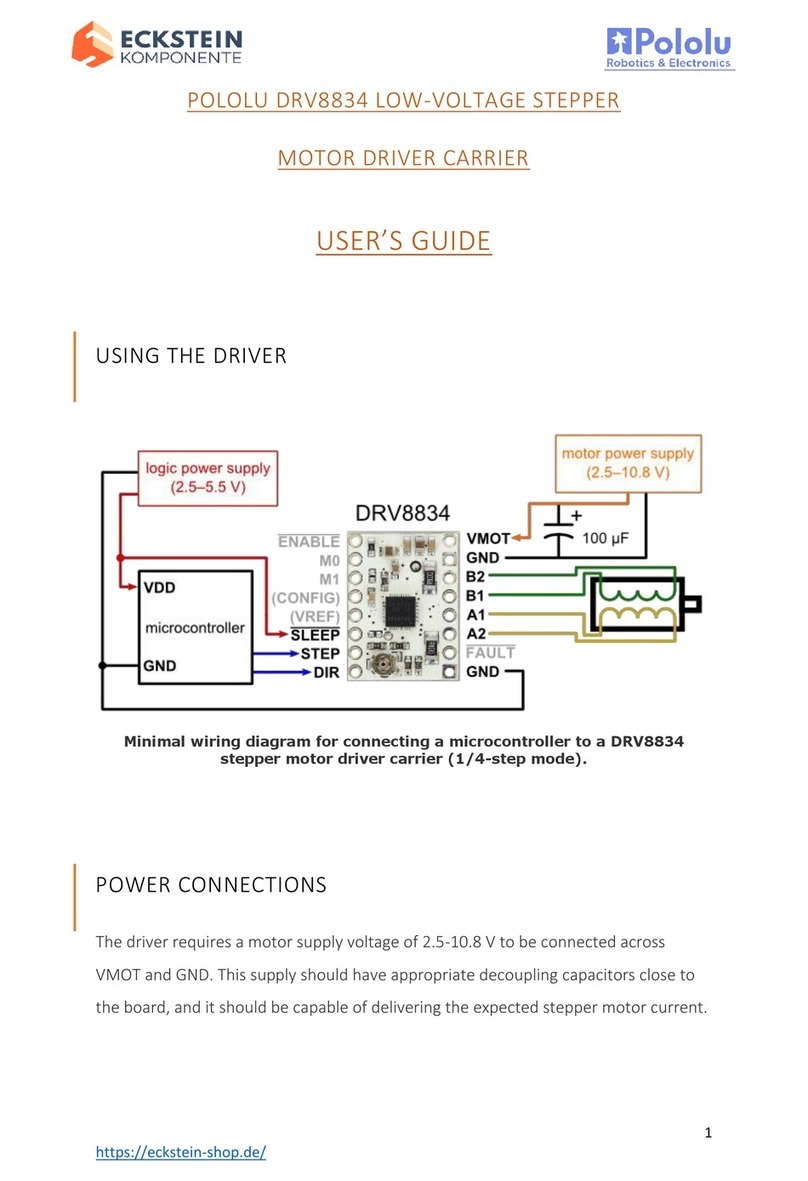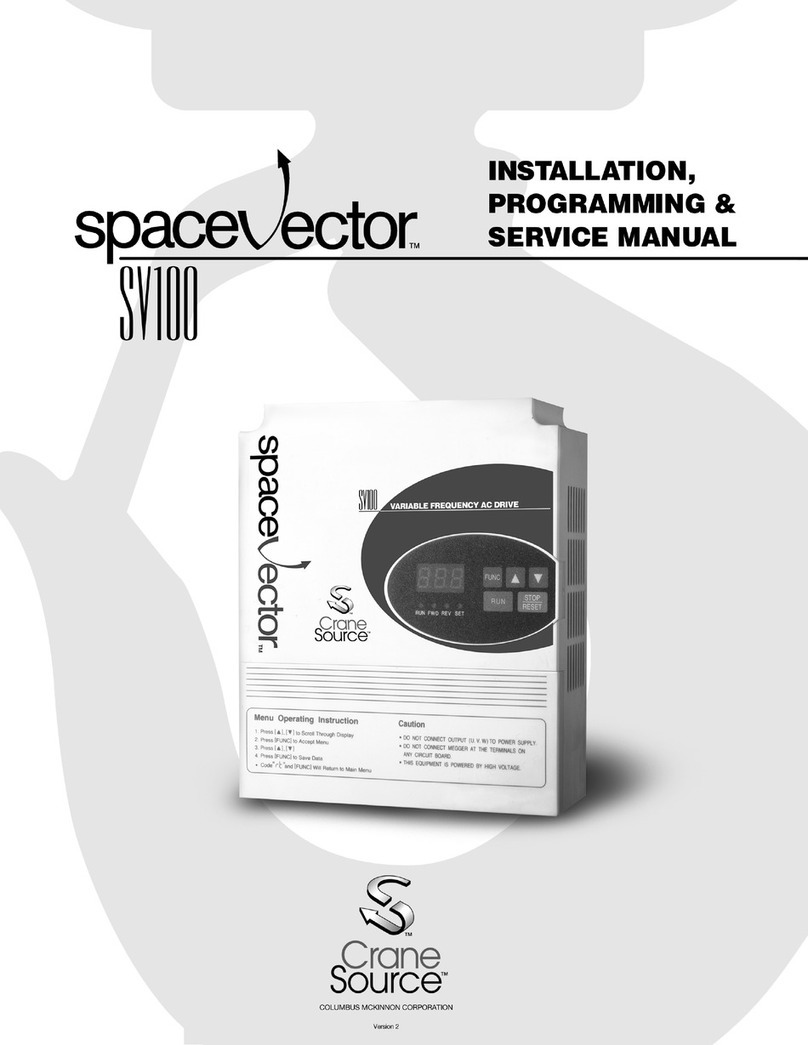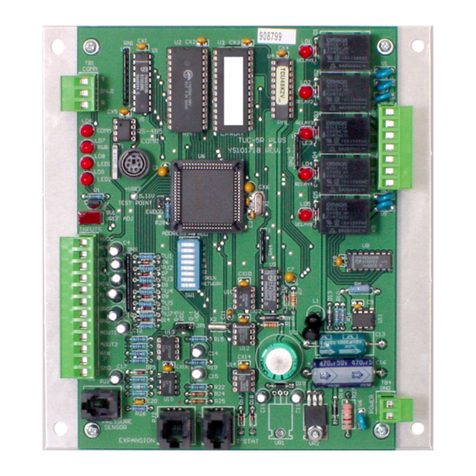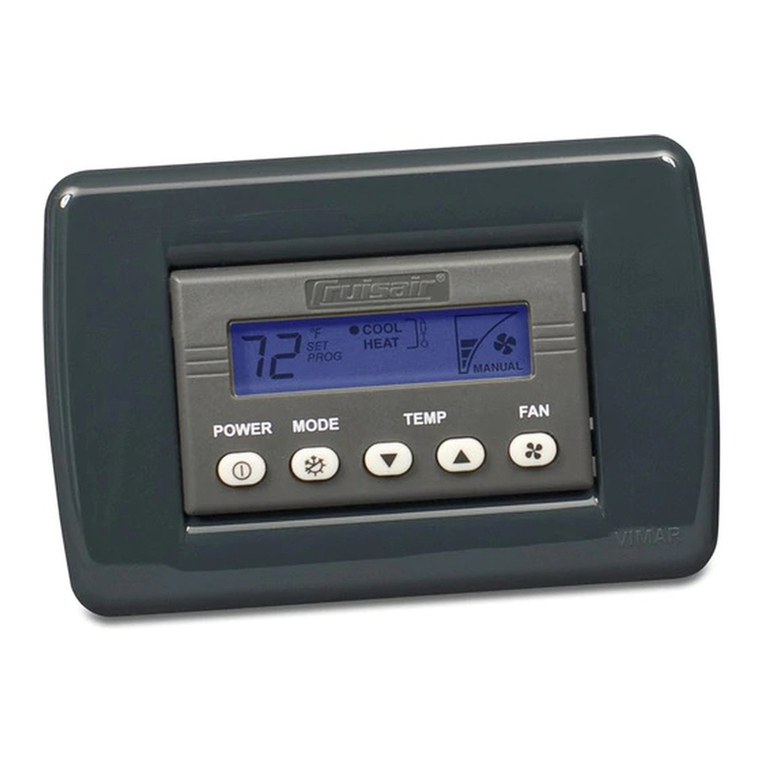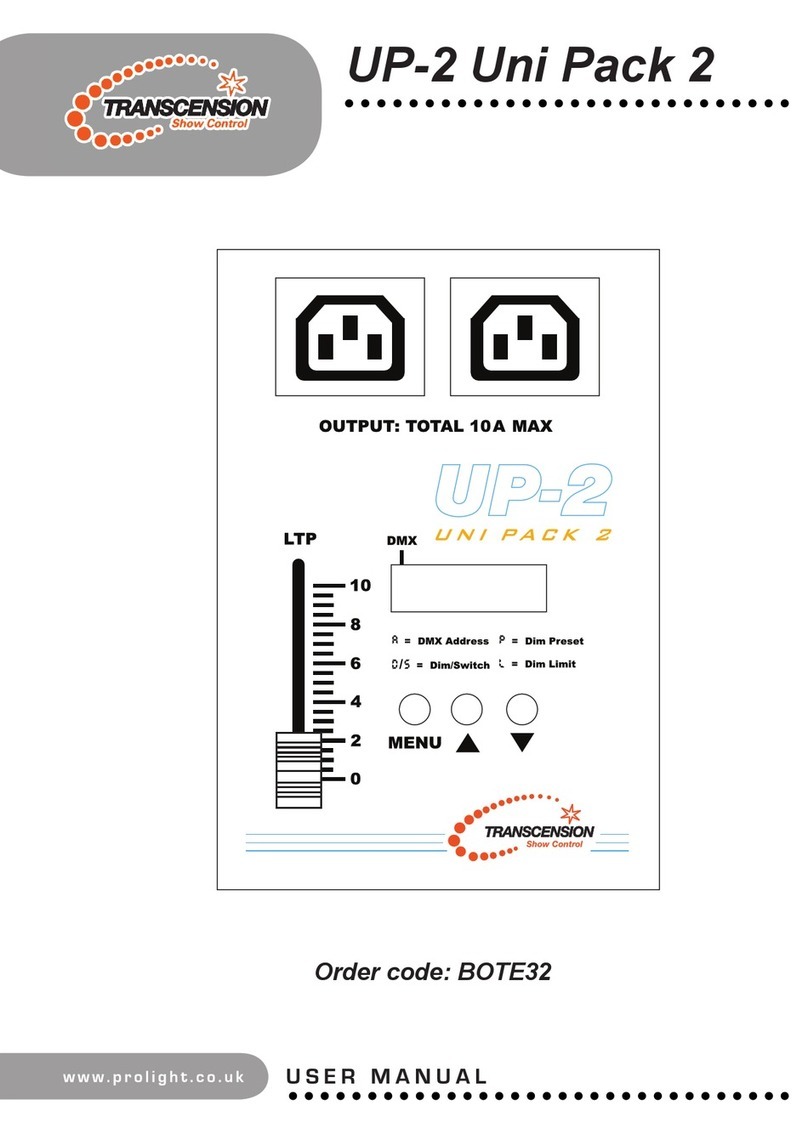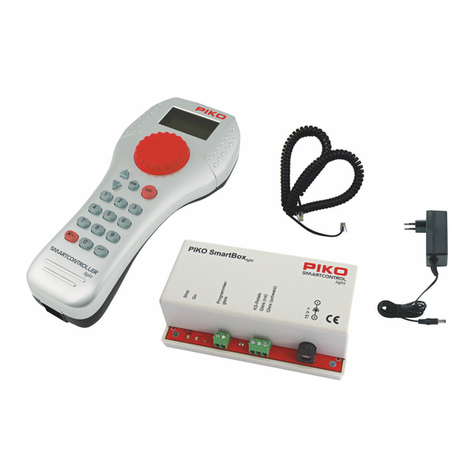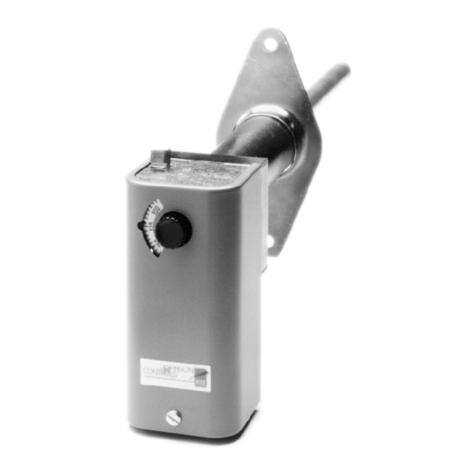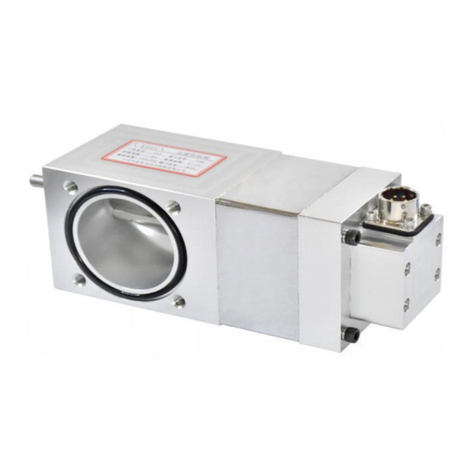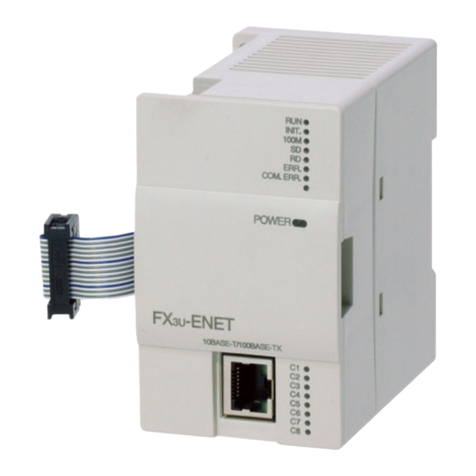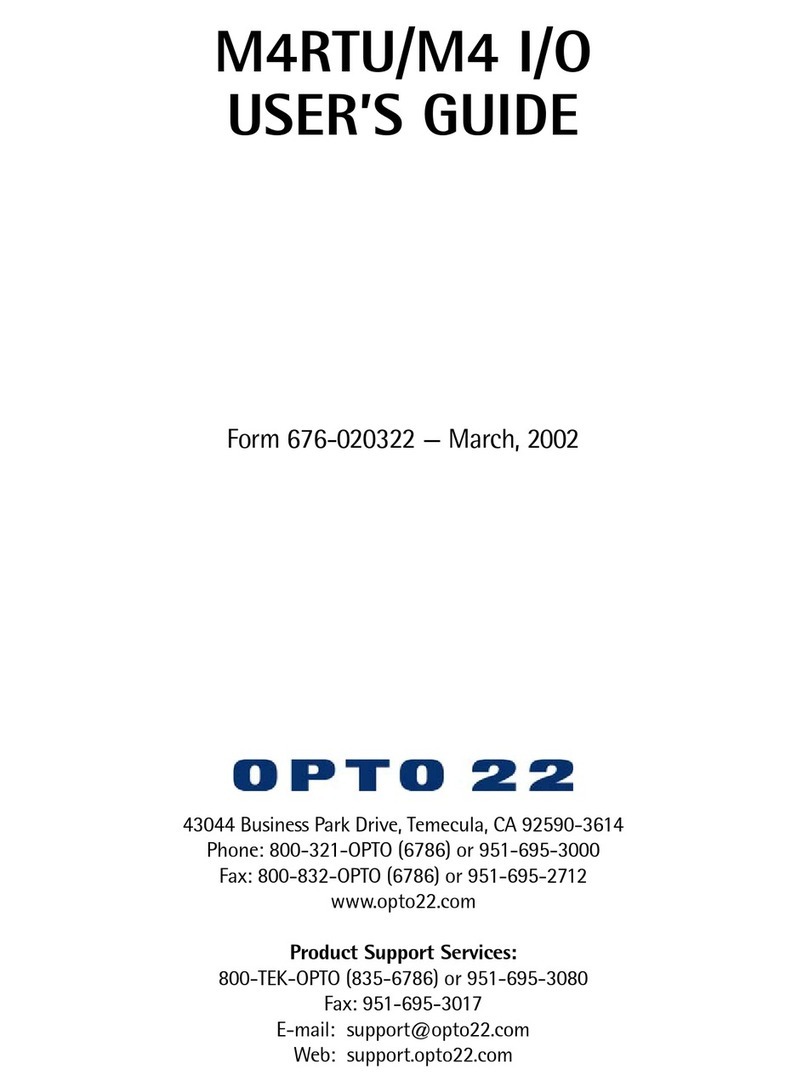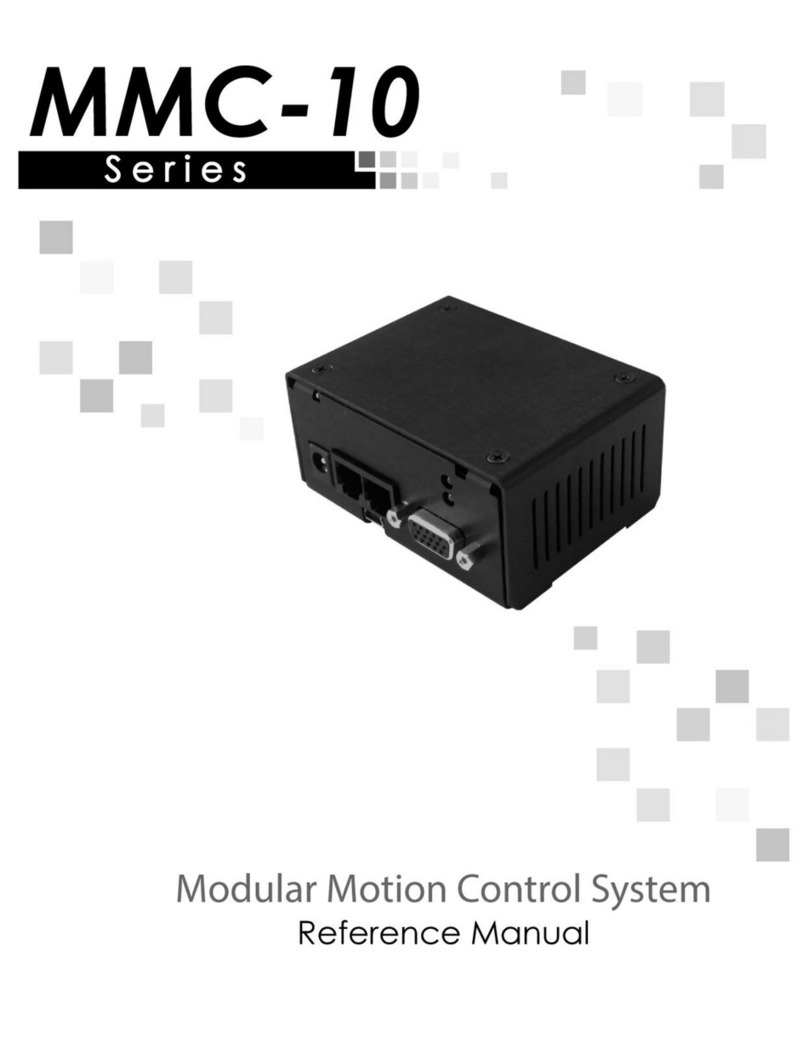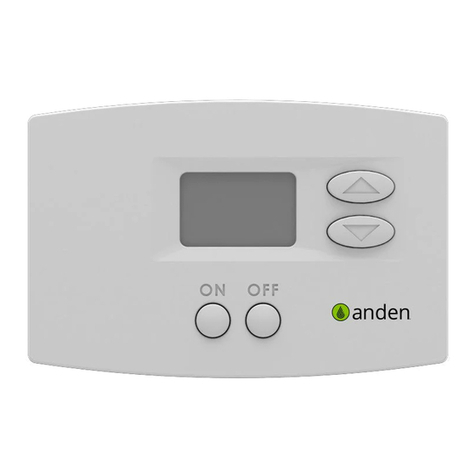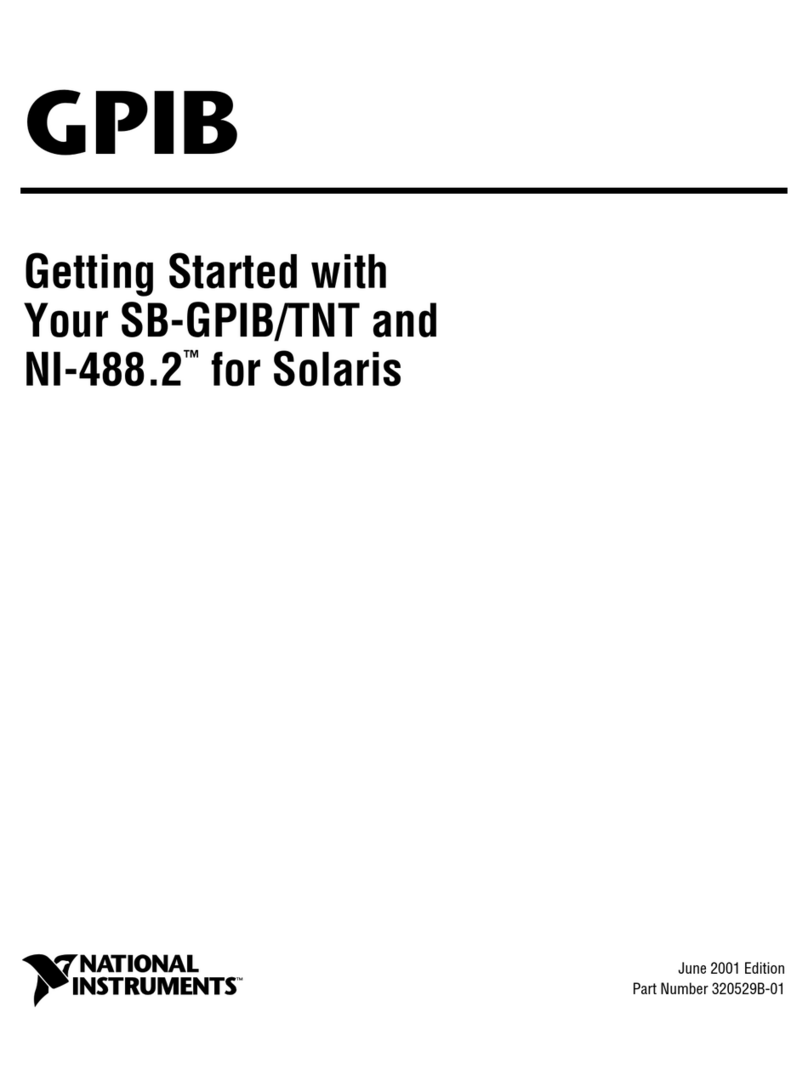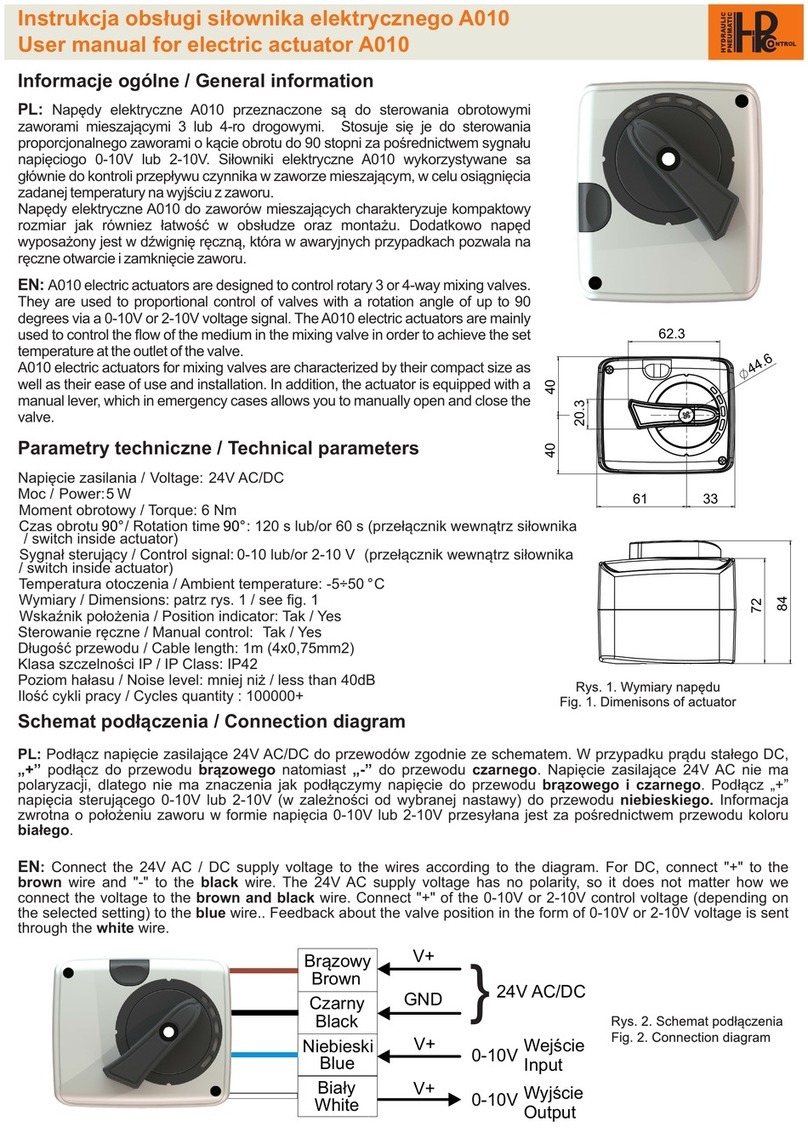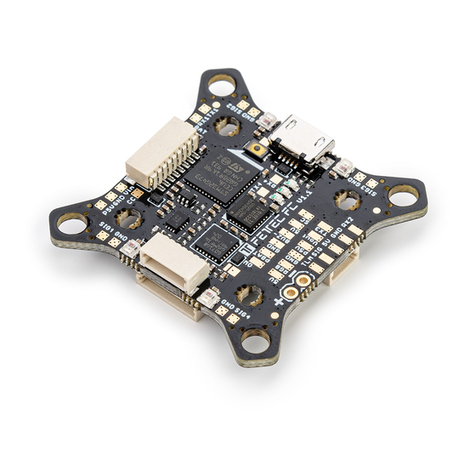Eckstein komponente POLOLU A4988 User manual

1
https://eckstein-shop.de/
POLOLU A4988 STEPPER MOTOR DRIVER
CARRIER
USER’S GUIDE
USING THE DRIVER
Minimal wiring diagram for connecting a microcontroller to an A4988 stepper motor
driver carrier (full-step mode).
POWER CONNECTIONS
The driver requires a logic supply voltage (3 –5.5 V) to be connected across the VDD
and GND pins and a motor supply voltage (8 –35 V) to be connected across VMOT and
GND. These supplies should have appropriate decoupling capacitors close to the board,
and they should be capable of delivering the expected currents (peaks up to 4 A for the
motor supply).

2
https://eckstein-shop.de/
Warning: This carrier board uses low-ESR ceramic capacitors, which makes it
susceptible to destructive LC voltage spikes, especially when using power leads longer
than a few inches. Under the right conditions, these spikes can exceed the 35 V
maximum voltage rating for the A4988 and permanently damage the board, even
when the motor supply voltage is as low as 12 V. One way to protect the driver from
such spikes is to put a large (at least 47 µF) electrolytic capacitor across motor power
(VMOT) and ground somewhere close to the board.
MOTOR CONNECTIONS
Four, six, and eight-wire stepper motors can be driven by the A4988 if they are properly
connected; a FAQ answer explains the proper wirings in detail.
Warning: Connecting or disconnecting a stepper motor while the driver is powered can
destroy the driver. (More generally, rewiring anything while it is powered is asking for
trouble.)
STEP (AND MICROSTEP) SIZE
Stepper motors typically have a step size specification (e.g. 1.8° or 200 steps per
revolution), which applies to full steps. A microstepping driver such as the A4988 allows
higher resolutions by allowing intermediate step locations, which are achieved by
energizing the coils with intermediate current levels. For instance, driving a motor in
quarter-step mode will give the 200-step-per-revolution motor 800 microsteps per
revolution by using four different current levels.
The resolution (step size) selector inputs (MS1, MS2, and MS3) enable selection from
the five step resolutions according to the table below. MS1 and MS3 have internal
100kΩpull-down resistors and MS2 has an internal 50kΩpull-down resistor, so leaving
these three microstep selection pins disconnected results in full-step mode. For the

3
https://eckstein-shop.de/
microstep modes to function correctly, the current limit must be set low enough (see
below) so that current limiting gets engaged. Otherwise, the intermediate current
levels will not be correctly maintained, and the motor will skip microsteps.
CONTROL INPUTS
Each pulse to the STEP input corresponds to one microstep of the stepper motor in the
direction selected by the DIR pin. Note that the STEP and DIR pins are not pulled to any
particular voltage internally, so you should not leave either of these pins floating in your
application. If you just want rotation in a single direction, you can tie DIR directly to VCC
or GND. The chip has three different inputs for controlling its many power
states: RST, SLP, and EN. For details about these power states, see the datasheet.
Please note that the RST pin is floating; if you are not using the pin, you can connect it
to the adjacent SLP pin on the PCB to bring it high and enable the board.
CURRENT LIMITING
One way to maximize stepper motor performance is to use as high of a voltage as is
practical for your application. In particular, increasing the voltage generally allows for
higher step rates and stepping torque since the current can change more quickly in the
coils after each step. However, in order to safely use voltages above the rated voltage
of a stepper motor, the coil current must be actively limited to keep it from exceeding
the motor’s rated current.
MS1
MS2
MS3
Microstep Resolution
Low
Low
Low
Full step
High
Low
Low
Half step
Low
High
Low
Quarter step
High
High
Low
Eighth step
High
High
High
Sixteenth step

4
https://eckstein-shop.de/
The A4988 supports such active current limiting, and the trimmer potentiometer on
the board can be used to set the current limit. One way to set the current limit is to put
the driver into full-step mode and measure the current running through a single motor
coil while adjusting the current limit potentiometer. This should be done with the
motor holding a fixed position (i.e. without clocking the STEP input). Note that the
current you are measuring is only 70% of the actual current limit setting, since both coils
are always on and limited to this value in full-step mode, so if you later enable
microstepping modes, the current through the coils will be able to exceed this
measured full-step current by 40% (1/0.7) on certain steps; please take this into
account when using this method to set the current limit. Also, note that you will need
to perform this adjustment again if you ever change the logic voltage, Vdd, since the
reference voltage that sets the current limit is a function of Vdd.
Note: The coil current can be very different from the power supply current, so you
should not use the current measured at the power supply to set the current limit. The
appropriate place to put your current meter is in series with one of your stepper motor
coils.
Another way to set the current limit is to calculate the reference voltage that
corresponds to your desired current limit and then adjust the current limit
potentiometer until you measure that voltage on the VREF pin. The VREF pin voltage is
accessible on a via that is circled on the bottom silkscreen of the circuit board. The
current limit, IMAX, relates to the reference voltage as follows:
or, rearranged to solve for VREF:
RCS is the current sense resistance; original versions of this board used 0.050 Ωcurrent
sense resistors, but we switched to using 0.068 Ωcurrent sense resistors in January

5
https://eckstein-shop.de/
2017, which makes more of the adjustment potentiometer’s range useful. The
following picture shows how to identify which current sense resistors your board has:
Identification of original 50 mΩsense resistors (left) and 68 mΩ
sense resistors (right) introduced in January 2017.
So, for example, if you want to set the current limit to 1 A and you have a board with
68 mΩsense resistors, you would set VREF to 540 mV. Doing this ensures that even
though the current through each coil changes from step to step, the magnitude of the
current vector in the stepper motor stays constant at 1 A:
If you instead want the current through each coil to be 1 A in full-step mode, you would
need to set the current limit to be 40% higher, or 1.4 A, since the coils are limited to
approximately 70% of the set current limit in full-step mode (the equation above shows
why this is the case). To do this with a board with 68 mΩsense resistors, you would set
VREF to 770 mV.

6
https://eckstein-shop.de/
POWER DISSIPATION CONSIDERATIONS
The A4988 driver IC has a maximum current rating of 2 A per coil, but the actual current
you can deliver depends on how well you can keep the IC cool. The carrier’s printed
circuit board is designed to draw heat out of the IC, but to supply more than
approximately 1 A per coil, a heat sink or other cooling method is required.
This product can get hot enough to burn you long before the chip overheats. Take care
when handling this product and other components connected to it.
Please note that measuring the current draw at the power supply will generally not
provide an accurate measure of the coil current. Since the input voltage to the driver
can be significantly higher than the coil voltage, the measured current on the power
supply can be quite a bit lower than the coil current (the driver and coil basically act
like a switching step-down power supply). Also, if the supply voltage is very high
compared to what the motor needs to achieve the set current, the duty cycle will be
very low, which also leads to significant differences between average and RMS currents.

7
https://eckstein-shop.de/
SCHEMATIC DIAGRAM
Schematic diagram of the A4988 stepper motor driver carrier
(both green and black editions).
Note: This board is a drop-in replacement for our original (and now discontinued)
A4983 stepper motor driver carrier. The newer A4988 offers overcurrent protection
and has an internal 100k pull-down on the MS1 microstep selection pin, but it is
otherwise virtually identical to the A4983.
Table of contents
Other Eckstein komponente Controllers manuals
